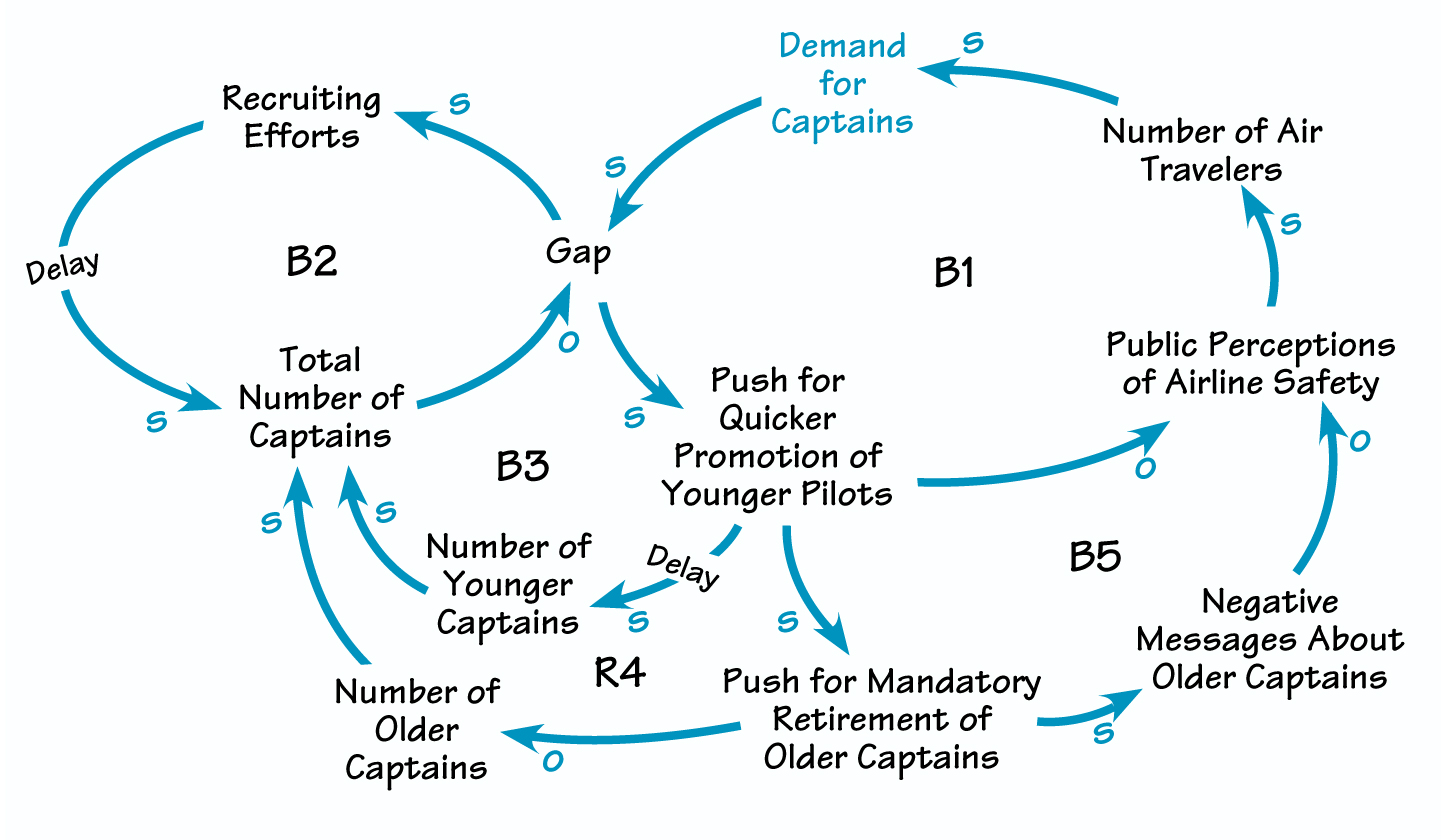Figures from the Federal Aviation Administration (FAA) show that air travel has doubled every 10 years since the 1960s. Trying to keep up with this booming demand has stretched the system to its limits, creating problems such as airport congestion, travel delays, and shortages of air traffic controllers and qualified captains. Various initiatives are under way to deal with each of these challenges. For instance, airlines are addressing the shortage of captains in two ways: by recruiting new pilots and promoting young pilots to captain more quickly than before.
“Flying Blind” illustrates some of the outcomes of these policies. The diagram illustrates how seemingly sensible initiatives can lead to a series of unintended consequences.
Grounded at Age 60
The growing number of air travelers has caused a gap between the demand for captains and their supply (B1). Recruiting increases the supply following a delay, as new pilots work their way up through the ranks (B2). At the same time, promoting pilots quickly creates more captains from the existing base of pilots (B3).
The shortage of qualified captains has also led to a questionable emphasis on younger pilots. In hopes of attracting more new pilots by dramatically increasing their chances of promotion to captain, the Air Line Pilots Association (ALPA) now supports mandatory retirement at age 60. This approach may help to boost the supply of captains over the long run, but in the short term, as more and more older captains are grounded, the pilot shortage will worsen (R4).
FLYING BLIND

The growing number of air travelers has caused a gap between the demand for captains and their supply (B1). Recruiting (B2) or promoting pilots quickly (B3) creates more captains. But as older captains are grounded, the pilot shortage will worsen (R4). And if travelers perceive older pilots as incompetent and younger ones as inexperienced, they may decide to stay home or use other forms of transportation (B5).
Another unintended consequence of these fixes deals with the flying public’s perception of airline safety. The portrayal of older pilots as incompetent, combined with the knowledge that pilots are being promoted faster than before, may reduce the public perception of air safety. Wary prospective customers may decide to stay home or use other forms of transportation reducing the shortage of captains by driving away business (B5)!
Back on Course
To design an effective set of interventions for this dynamic, we must clarify the original goal: to satisfy increasing customer demand. The Age 60 Rule works against this goal by forcing pilots to retire even if they pass their regularly required proficiency tests, physical exams, and spot checks. Instead, their high level of expertise could be leveraged both in mentoring programs and as a selling point to airlines and the public.
An analogy with manufacturing illustrates the ALPA’s dilemma. While working to increase the rate of “raw material acquisition” (recruiting) and “production” (training and promotion to captain), the ALPA also is vigorously discarding its valuable inventory of “finished product” (experienced captains)—and that’s a business practice that just won’t fly.
